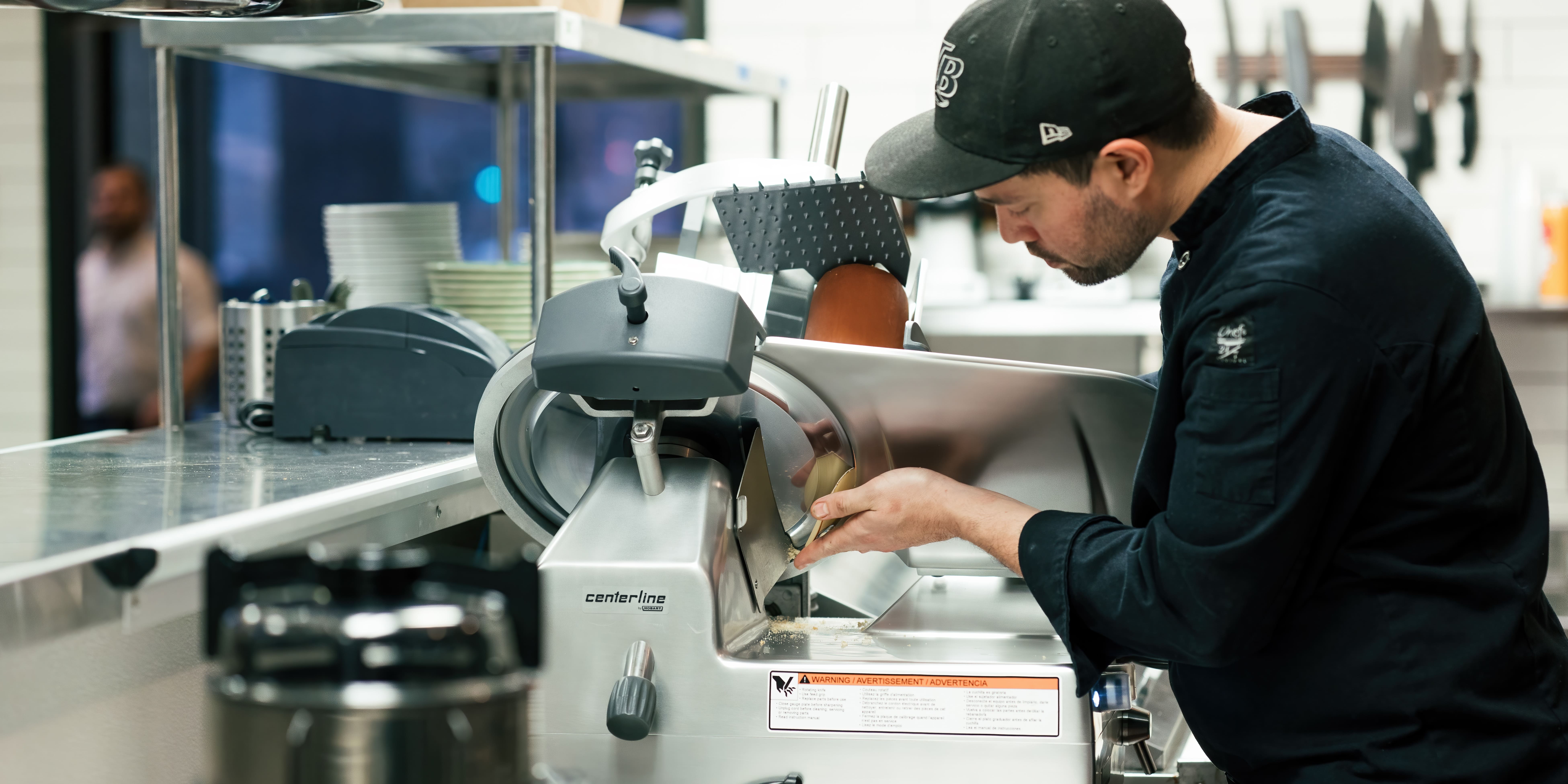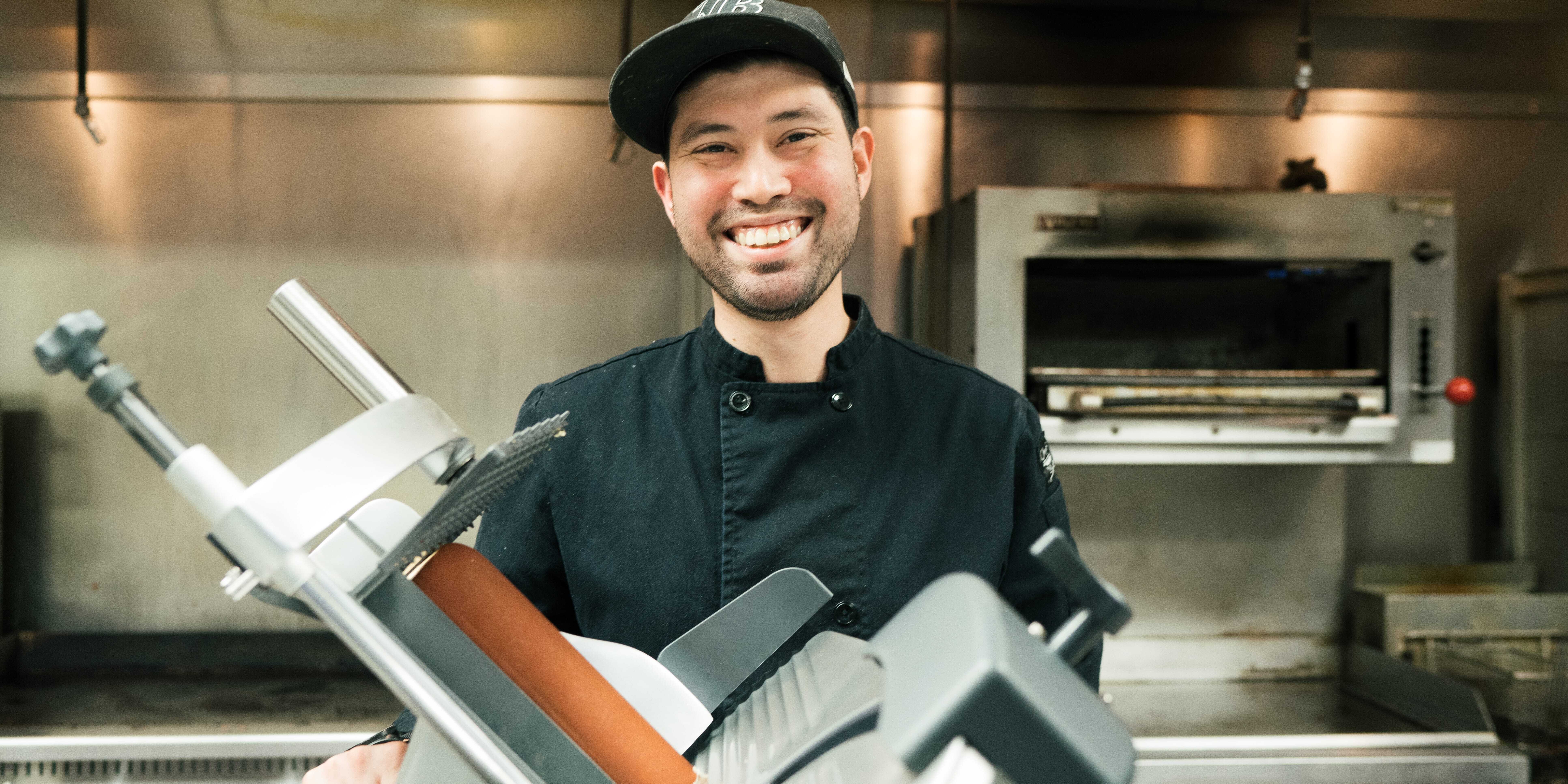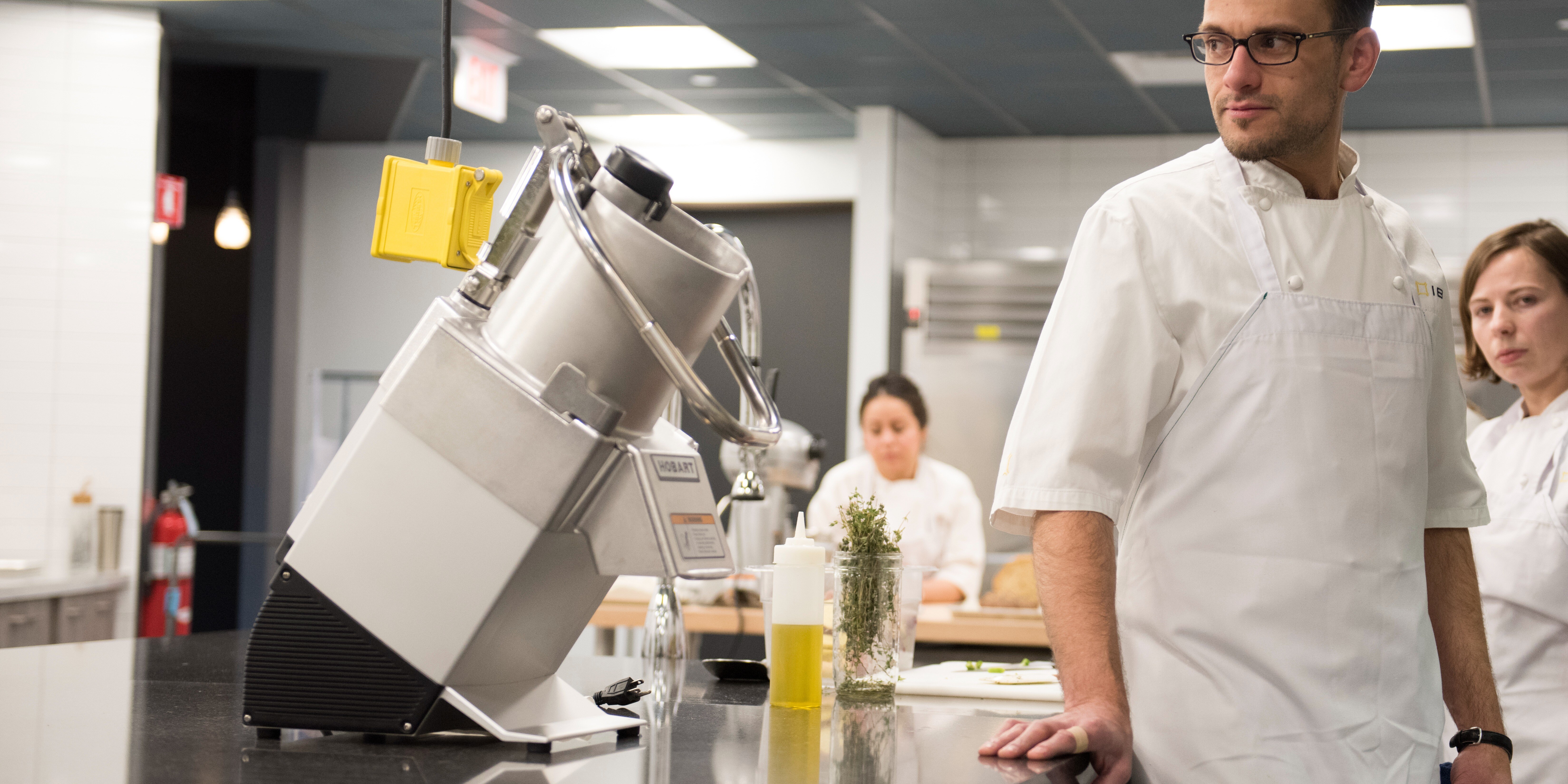In independent restaurants, time is at a premium. Between purchasing and inventory, menu planning, food prep and meal service, it can be taxing for kitchen staff to keep up with daily tasks. Regular and thorough cleaning, however, is non-negotiable — including food prep equipment.
Training staff to follow the manufacturer’s recommended cleaning processes and the right frequency is key. Proper cleaning and sanitizing not only reduces contamination risk, but it also helps equipment last longer. Following some simple dos and don’ts can help make sure the job is done right.
Note: The first step, and a DO for every piece of food prep equipment, is to unplug the machine prior to cleaning.
Mixer dos and don’ts
There are some important steps to follow when cleaning and sanitizing Hobart commercial mixers.
Remove the bowl guard, bowl and agitator and wash these parts in a three-compartment sink containing soapy water (first), clear water (second) and a Quat sanitizer (third). The water for the Quat sanitizer should be at room temperature. Allow to air dry. Operators can also clean these components in a dishwasher to save time. Cleaning and sanitizing should take place after use for single recipes and between batches of different ingredients.
Wipe down the mixer thoroughly with a clean, damp cloth to remove any flour, egg or other food debris. Be sure to wipe up under the planetary where the mixing action takes place. Spray Quat solution to sanitize. Allow the mixer to air dry or use a clean towel to dry.
To gain the best performance from, don’t overclean the commercial mixer, particularly where the mixer bowl slides up and down on the actuator. The slideway has grease to aid in movement; wiping too much can remove the grease, causing issues with rising and lowering the bowl. Reapply mineral oil or food grade oil or paste if this occurs. Likewise, don’t remove knobs and wipe down the control panel too often. This task can be done periodically but doing it frequently can allow moisture to infiltrate the control panel, resulting in poor operation. Don’t use bleach to clean the mixer, as it is too harsh, and do not reuse cloths when wiping down the mixer. Never hose down the mixer.
Food processor dos and don’ts
To get the best performance from a Hobart continuous-feed food processor and reduce the risk of contamination, clean the machine immediately after each use. Between processing different fruits and vegetables, wipe out the hopper and rinse the cutting tool to avoid residual scraps during the next processing. When grating cheese or when processing is done for the day, the food processor must be thoroughly cleaned.
Dismantle all removable parts, including the hopper and pusher plate and wash, rinse and sanitize in a three-compartment sink (washing in a dishwasher will discolor these components). Remove the cutting tool, taking care to treat it like any other knife in the kitchen. Transport any cutting tools used during the day in a container to a three-compartment sink. Since these tools are stainless steel, they can also be washed in a dishwasher.
To protect the operator and ensure the integrity of the cutting tools, never dump these blades into a three-compartment sink. Walk each blade separately through the cleaning, rinsing and sanitizing process. Don’t leave cutting tools in a wet condition after cleaning. Instead, allow them to dry in a drying rack and place them on a wall rack until they are needed again. To avoid operator burns and poor processing of products, don’t use blades that are hot from the dishwasher. Allow them to come to room temperature. As with a mixer, never hose down the food processor.
Hobart bowl food processors, which are good options for emulsifying, mixing and mincing, require similar attention to detail when cleaning. They should be cleaned after each use, removing the bowl cover and scraper, knife shaft and bowl. These can be cleaned in a three-compartment sink or dishwasher. Never use steel wool or abrasive sponges to clean the food processor.
Slicer dos and don’ts
Like commercial food processors, Hobart slicer machines can be cleaned regularly during the day without fully disassembling them. Throughout daily use and in between slicing various types of meat, lay the carriage back and wipe the machine with a clean, damp cloth, including the gauge plate. Doing so helps reduce the risk of cross-contamination.
To deep clean the slicer at the end of the day, remove the meat grip and product tray, making sure the gauge plate is closed. The product tray can also be cleaned in the open position. Remove the remaining parts, including the top knife cover and ring guard cover. Use the knife removal tool to remove the blade. This allows not only for cleaning of the blade, but it also provides access to the rest of the machine for more thorough cleaning. The blade, top knife cover and ring guard cover can be washed in a dishwasher and the other parts can be washed, rinsed and sanitized in a three-compartment sink.
Wipe down the rest of the machine with a clean, damp cloth, being sure to clean underneath it. Hobart HS6 and HS8 Series slicers have cleaning legs to lift the machines and make access easier. The HS7 and HS9 Series slices have a gas assist spring, while the Centerline™ by Hobart Edge 13A slicer has tall legs to supply access. Spray the slicer with sanitizer and allow all components to fully dry before reassembling the slicer.
Never hose down the slicer, as it can damage electrical components, and don’t forget to clean the knife sharpener. Wipe out any food scraps and wash by hand or in a dishwasher.
Keeping clean and long lasting
Training is essential when it comes to cleaning and sanitizing food prep equipment properly. Not only does cleanliness matter from a food safety standpoint, but it can also lengthen the life of the equipment and protect a kitchen’s investment. The machines must remain clean to run properly. Take the time to walk new employees through the correct process and monitor as needed to ensure it is completed according to the operator manuals.
About the Author
.jpg?width=67&height=67&name=Bilger%20Carolyn%201%201x1-2_%20(002).jpg) Carolyn Bilger is the marketing director for Hobart – Food Preparation Products. She has been with Hobart since 2015 and sets the strategy for marketing and new product development for the full line of Hobart food preparation equipment. See all her blogs here.
Carolyn Bilger is the marketing director for Hobart – Food Preparation Products. She has been with Hobart since 2015 and sets the strategy for marketing and new product development for the full line of Hobart food preparation equipment. See all her blogs here.


.jpg)


-min.jpg)





